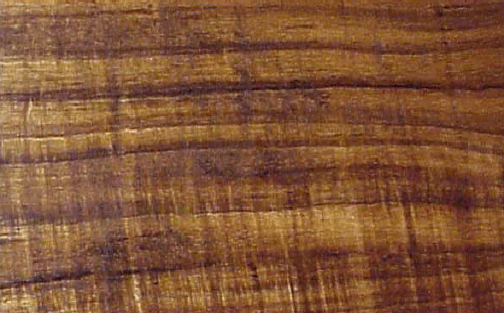OUT OF DATE - I've moved three times since I had my shop in Beloit. Medical issues halted my guitar building, but things have improved and I'd like to get back to work. I need help setting up the shop, so I'm waiting. Nov, 2020
I build all my instruments personally in my one-man shop in Beloit, WI. My shop is in the cellar of a
125 year old Victorian house
. I spent 4 weeks as a stone mason when we first moved here, just to seal the
cellar
off properly from water leaking in over decades. Many scores of pounds of hydraulic cement replaced the decayed mortar, and all cellar walls were then primed and sealed with a special paint (Dry-Lok). Then the floor was scrubbed clean, cracks repaired, primed and painted with a special floor paint. All the
work paid off,
and even in the rainiest weather, the cellar remains dry. This was all necessary to control the temperature and humidity in the shop.
I've installed a high-efficiency industrial dehumidifier in the center of the area. Along with the central air, whole house humidifier and a small heater, I can keep the environment of the shop consistently at 72°F and 45% RH. This provides the best conditions for building solid wood instruments. I store all wood in the shop for at least a month before using it. Most of it has been there for over a year, so it's very stable and well dried.
My shop is small and everything is close at hand. It works well for me, but might be tight for someone else. It's very well lighted and has a high ceiling, so it doesn't feel like a cellar. I wish it had windows to the outside world, though. I often have friends and customers who want to see my shop, and it can get tight with 2 or 3 people there besides me. Nevertheless, I love it. It's relatively clean, thanks in no small part to the 1200 CFM dust collector I installed. It's ducted around the entire perimeter of the shop with 8 gates, so there's always a gate close to where it's needed. I also have a hanging .5 micron dust filter at the center of the shop, which keeps all dust under control.
My main workplace is my workbench, which I built from my own design when I still lived in McHenry. I'll get some pictures out here soon. Several good planes of various sizes,
a wide assortment of chisels, files, saws, clamps and other hand tools
fill up drawers and
hang from walls and ceiling.
A 14" band saw, 6" jointer, 14" drill press, 16"/32" drum sander and contractor's table saw make up the large power equipment. A couple of orbital sanders, several routers, a cordless drill, a Dremel and a Foredom comprise the small power equipment, along with a good contractor's shop vac. I've built a smaller worktable with a removable top which comes in very handy for lot of operations requiring stability and versatile clamping options. I also have a heavy duty roll-around cart which can share the top from the worktable when needed. This also allows some flexibility of location and movable storage. I have a 24" x 48" portable downdraft table which can be placed where needed and connected to the dust collector. This is absolutely necessary to keep the dust under control.
Then there are scores of fixtures, templates, workboards and clamping cauls. My most recent addition is the vacuum pump and various frames I use for vacuum clamping of bracing and bridges. I also use it to glue up purfling veneer sheets, then cut them into strips for use. I'm so pleased with the results of vacuum clamping. It definitely provides a more consistent result in brace and bridge gluing. The
bracing frame
clamps to my workbench and has a "hinged" top, allowing the entire workboard to sit in the frame, then open and close for access. I designed and built the frames, and recycled the vacuum pump from my brother-in-law's stash of damaged vacuum pumps (he works for a company that sells electron microscopes, which require a vacuum pump...they give him defective pumps which occasionally are returned and has quite a collection after 20 years). I managed to use several pumps to get a good one. It's a big overkill for my purposes, able to pull >29 HG in seconds on a large frame. I built a control to maintain the proper vacuum pressure, and the system works great.
I also have a layout area with a large, flat surface for drawing or cutting templates or whatever. Several shelving units and a base cabinet with drawers provide some further storage. I don't spray lacquer in my shop, having no way to exhaust the fumes without violating the environment control. As a result, I've developed a good working relationship with a local business owner (and guitar player), who has a nice spray booth for lacquer. I keep my supplies at his place, and take instruments there when I'm ready to spray. It's a very good situation for both of us. Maybe, one day, I'll get a spray booth set up in my garage, but it seems unnecessary at the moment.
It's a lot of work and expense to get a shop set up and maintained for doing lutherie, at least if you are going to control the environment and not kill yourself with dust and lethal fumes. Some builders don't concern themselves with the temperature or humidity, or if they do, they just build when the right conditions occur. I can't get away with that, needing to be able to work when the work is available. I also take on a small amount of repair work for the sake of learning and eating, and a full time shop is absolutely necessary if this is not just a guy's hobby.
![header=[J. Rod McClellan] body=[This is me - playing guitar at a friend's house. Sorry about the 5 o'clock shadow]](images/Photos/people/rod1.jpg)
J. Rod McClellan
Luthier


![header=[Interesting Info] body=[These are my initials - JRMc]](images/initials.gif)
